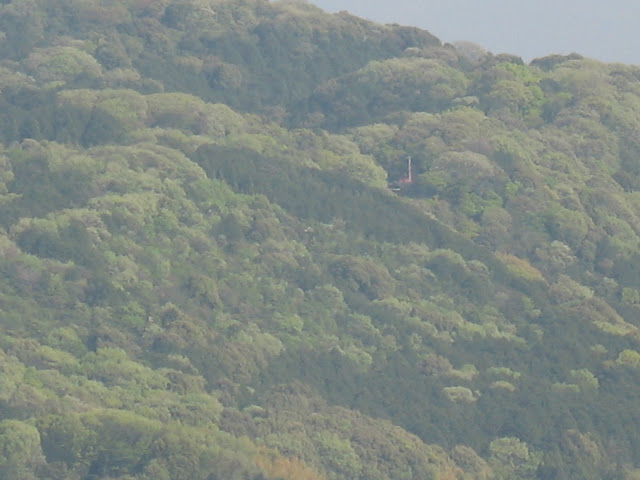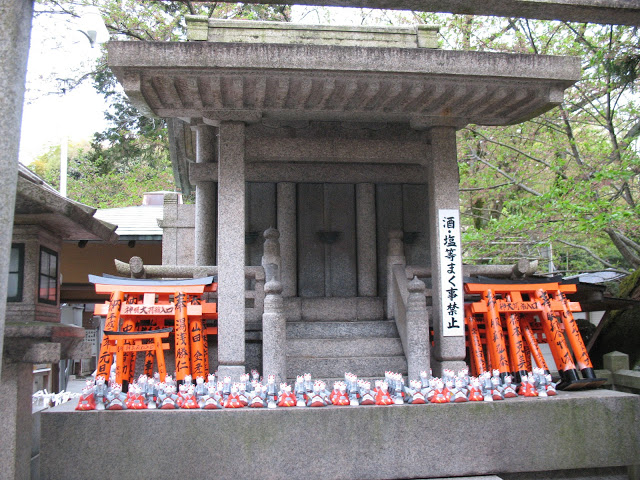Sometimes, while travelling you make a lot of plans of the places you want to see. However, there is always something that comes up when you least expect it. And more often than not, the unexpected turnes out to be great :)
One time, when I went to admire the Kyoto Tower and the views from it, I noticed something orange among the dense trees. "What is that?" - I kept thinking and finally went to ask the person who worked at the top of the Kyoto Tower. He informed me that it's Fushimi Inari-taisha and he directed me (more or less) how to get there.
Surprisingly, the shrine was not on my "must see" list, but there was something mysterious and wonderful in that place so I decided to visit it. It was a sunny and very warm day so I was looking forward to going into the shade and cooling of a bit.
First, I encountered a big torii gate, which is sort of an entrance to the whole shrine. The torii can be build from wood or stones, but there are also concrete, steel or copper gates. They can be left in their natural colors or painted, usually black and vermilion (or orange for those who are less able to distinguish colors - like me :).
After going a bit further there is a special place to wash your hands, still further there are first big torii gates. The further you walk, the more torris you see and finally you find yourself in long, orange tunnels surrounded by 100 of Japanese characters on both sides to admire and read ;). Inari (the god of rice) is a patron of buisiness, so that's why many buisnesses in Japan donated new torii gates and inscripted their names on them (and there are still more coming).
Till this day I'm under great impression of the Fushimi Inari-taisha. It was simply wonderful to walk under the torii gates, among trees, breath fresh air and enjoy the quiet (which in Japan is a rare thing). It will always remain one of my favorite places in Japan.
First, I encountered a big torii gate, which is sort of an entrance to the whole shrine. The torii can be build from wood or stones, but there are also concrete, steel or copper gates. They can be left in their natural colors or painted, usually black and vermilion (or orange for those who are less able to distinguish colors - like me :).
After going a bit further there is a special place to wash your hands, still further there are first big torii gates. The further you walk, the more torris you see and finally you find yourself in long, orange tunnels surrounded by 100 of Japanese characters on both sides to admire and read ;). Inari (the god of rice) is a patron of buisiness, so that's why many buisnesses in Japan donated new torii gates and inscripted their names on them (and there are still more coming).
Till this day I'm under great impression of the Fushimi Inari-taisha. It was simply wonderful to walk under the torii gates, among trees, breath fresh air and enjoy the quiet (which in Japan is a rare thing). It will always remain one of my favorite places in Japan.
Fushimi Inari seen from the Kyoto Tower
The first torii gate
The inside
Start of the torii tunnel
Smaller gates
In between
The surreal site
Going downhill
Foxes - the messengers
The place to wash your hands before you enter the shrine










Brak komentarzy:
Prześlij komentarz